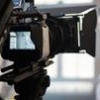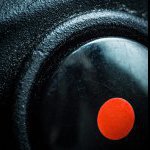Search the Community
Showing results for tags 'Resolve'.
-
Hello, I am new to this forum (first post) and beginner filmaker and I will need advice ... Last June I started shooting for my documentary project on the local natural heritage, for now with my own money, so my gear is rather light... I'm shooting with a Canon Eos 70D DSLR, outdoor, and i'm shooting the natural spaces of a valley (along a river). At the start I wanted to film in RAW with Magic Lantern, but with my 70D i'm stuck in 720p (for a continuous recording), so finally i've shot in a compressed way, Mpeg-4 All-I 8bit 4:2:0 @1080p 29.97fps with a picture style (EOSHD C-LOG (0,-4,-4,2)) + Vari ND Filter, hoping to get myself out of it even in post-prod ... But here the quality of the images, in a context of shooting outdoors in shaded places very contrasted (...), do not satisfy me ! So I would like to have advice to achieve a higher quality outdoor shots (natural light)? To illustrate my purpose you can see these few shots that I graded in Resolve + corrections in After Effects: https://vimeo.com/alexandrewebercom/riviereardeche The third shot is particularly ugly ... - Have I "pushed" the mpeg-4 too far by color grading it or is it simply the limitations of this compression? - How do I do with hyper contrast scenes (it was about 14h when shooting)? - Am I condemned to film in RAW whatever the chosen camera (to be able to uncork the blacks or to recover in the whites in post-prod)? - Is it better that I under-expose or over-expose this type of scene? - Can you suggest gear/ configuration more suitable for my use: Camera, Raw / Prores, Log, external recording ... ? Thanks a lot !
-
Magic Lantern RAW 14bit video. Graded in Davinci Resolve. Mostly 6D, very few shots on 5D3. Thanks for watching, Alex
-

'Don't Stop' Music Video shot on BMCC + few DNGs to play with
MarcLinnhoff posted a topic in Cameras
Here is the narrative music video 'Don't Stop' that I have directed & shot with my lovely BMCC : + few DNGs to play with : https://dl.dropboxusercontent.com/u/...tStop_DNGs.zip Lenses used : 21 & 35mm Zeiss CP.2 - Tokina 11-16 + Mikkro Nikkor 55mm AI-S Softwares used : Resolve 9 - FCPX - After Effect and Mocha Pro I would love to get some feedback ----- Produced & directed by MARC LINNHOFF - marclinnhoff.com Music by BROAD RUSH get the full version here : hook-up.fr/broad-rush-dont-stop/ Backstage photos from P-mod : flickriver.com/photos/p-mod/sets/72157633312056426/ Starring : Joffrey Schmidt - Clarisse Hagenmuller - Denis Jelly - Nina Schouler - Pierre Riff Camera & post-production : Marc Linnhoff Lighting : Ludovic Haas - Dom Pichard/P-mod Make up : Anne-K Lejeal - Elsa Parmentier Special thanks to Yoko Tsuji, Jacques Roth, Tsaki, Arnaud Masson, Jessi & Michel..- 11 replies
-
I've been experimenting with Resolve and ACR, trying to find the best workflow for RAW. By best, the highest quality possible in the shortest amount of time. ACR+AE runs a few frames/sec on my 4-core MBP and about 6-fps on my 12-core Mac Pro (both cases running with AE multiframe processing on). Resolve runs near real-time on the laptop, and slightly faster on the Mac Pro (Quadro 5000 is getting long in the tooth- a newer consumer card with hacked mac ROM would be faster). While I have been able to get Resolve looking closer to ACR, I have not been able to match it. http://www.dvxuser.com/V6/showthread.php?320727-Results-of-testing-various-5D3-RAW-workflows The first goal was to get Resolve to show an accurate image of what was shot. All the experiments with BMD Film color space and LUTs weren't able to do this (including the EOSHD and Hunters "Alexa" LUTs). I also experimented with creating 3D LUTs from scratch. The 5D3 RAW footage is pretty much linear RGB. It appears it can be transformed to BT.709/Rec709 with a simple matrix (linear transform). Using the Rec 709 color space and gamma in Resolve, I can get much closer to the correct colors for the scene shot. Unless we are going from 14-bit to 10-bit (for example), it doesn't make sense to convert to a log color space since we've already got everything captured in linear. From there we can grade for style then save out the final render with a Rec 709 compliant color space (it's not clear what Resolve does with out of gamut colors- clip, etc.). Log makes sense in a camera capturing and preserving dynamic range to a file format which can't otherwise store the full range sufficiently. Log can also make sense if one wishes to use a 3D LUT that needs log as input. However, there a many different log formats, ARRI, Canon, Sony, etc. all make different versions. At the end of the day, we need to get back to something like Rec 709 for broadcast (of course internet test videos are excluded). After comparing ACR, Resolve 10, and AMaZE (used by mlrawviewer: http://www.magiclantern.fm/forum/index.php?topic=9560.0, which plays MLV's in real-time and can output ProRes HQ (a little faster than ACR, but still slow (AMaZE only used for export)) debayering, they are all very close. ACR is doing something with color and microcontrast that puts it above everything else right now. It looks very accurate and also 'pops' in a way that I haven't been able to get from Resolve (granted, I'm just now really learning it). I'm planning for a ~90-minute final product which means lots of footage. Even shooting Robert Rodriguez style (limited takes- edit as much as possible in-camera), there will be terabytes of footage. For now I'm thinking to use Resolve to make ProRes/DNxHD proxies quickly then go back and only process necessary clips with ACR+AE for the final cut (until or unless I can figure out how to make Resolve look as good as ACR). Or batch convert ACR+AE overnight and replace proxies as I go (deleting the massive RAW files). 5D3 RAW is amazing, but requires a lot of planning, work, and most significantly, drive space.
-
https://vimeo.com/72163697 I've been learning DaVinci Resolve to add to my video workflow. This is the first project that I graded with it. The footage was shot with the GH2 (Driftwood Cluster_v7), Voigtlander Nokton 25mm f/0.95 and Nikon Nikkor 50mm f/1.8 Series E. Program used: Premiere Pro, After Effects, DaVinci Resolve There are many ways to do this. I figured out this workflow by reading the manual PDF and some tutorial videos. It works for me so far. 1. edit using MTS (from the GH2) in Premiere Pro (sequence01) 2. lock the edit 3. transcode used clips with 5DtoRGB to MOV (ProRes422(HQ), ITU-R BT.709, Full Range) for Resolve to grade (I tried to export XML from PP with MTS in timeline, then Resolve kept asking about missing video files. Looks like Resolve doesn't recognize MTS) 4. bring the transcoded MOV to PP and replace the edited MTS in timeline (sequence02). 5. export XML from PP 6. in Resolve, add the transcoded MOV to Media Pool 7. import the XML, uncheck "automatically add clips to media pool" 8. grade (time consuming) 9. export graded clips to ProRes422(HQ) MOV with unique names 10. go back to PP, import the graded MOV and replace the clips in the previous timeline (sequence03) 11. Retouch skin in some clips with AE, using the graded MOV 12. create motion titles 13. in PP, add extra adjustment and add titles made in AE. 14. I actually go back and forth between PP, AE and Resolve a few times to adjust the skin tone for consistency. But the way I set up files let PP and AE relink the clips automatically, which is nice. 15. fine-tune music 16. export the final movie in PP It's really time consuming, but it worked for me. Again, this is my first attempt to incorporate DaVinci Resolve to my workflow. If there are only a few clips, I can grade first and edit. But a shoot like this has like 50+ clips, I have to edit first to know which ones to grade, therefore a workflow like this. I wanted to share my steps and to see if there's any suggestions to improve the process. P.S. The famous stair-step gradient in GH2 is something I have no idea how to fix. Thanks for reading.
-
Like many people, I am looking at getting a new computer that will work well Davinci Resolve and will reasonably future-proof as the era of 4K begins to descend upon us. As a long time Mac user, the idea of the Hackintosh is growing on me. But I'm a camera guy, not a computer guy. It has been about a decade since I've tried to customize my computer hardware and a lot has changed. A lot of this is looking pretty foreign to me. There's a pretty comprehensive guide at NoFilmSchool that was just updated last month ([url="http://nofilmschool.com/build-a-hackintosh/"]http://nofilmschool....d-a-hackintosh/[/url]), and to a computer simpleton like myself it looks great from performance and cost standpoints. But I have yet to find anyone's firsthand report on just how well this particular setup handles Resolve. Is anyone who is using this particular setup also using Resolve? For a spec comparison, here's a "recommended requirements" link from Davinci that was initially posted in response to Andrew's recent post about the BMCC: [url="http://www.blackmagicdesign.com/media/4805318/Resolve_Win_Config_Guide_2012-08-30.pdf"]http://www.blackmagi..._2012-08-30.pdf[/url]
- 7 replies
-
- hackintosh
- davinci
-
(and 1 more)
Tagged with:





